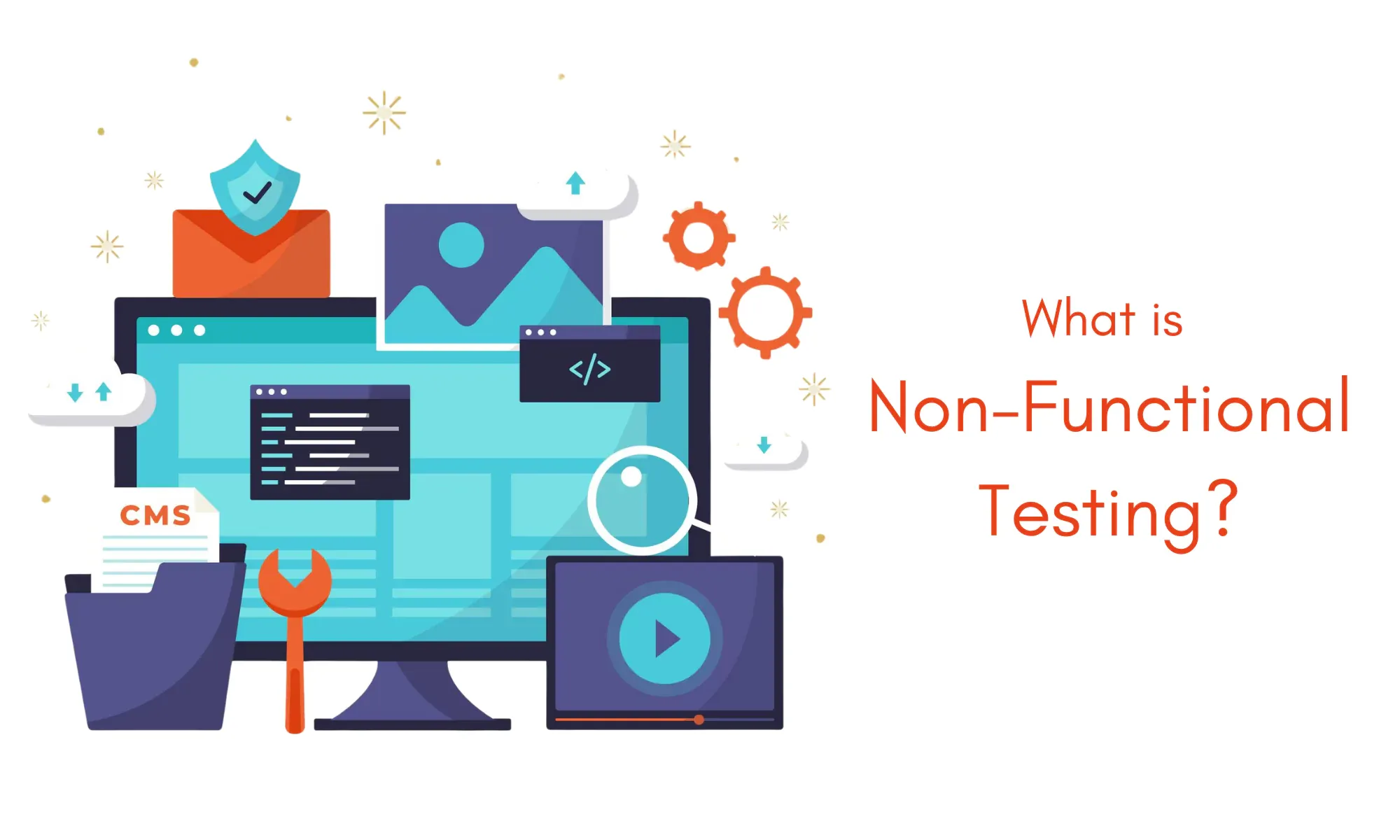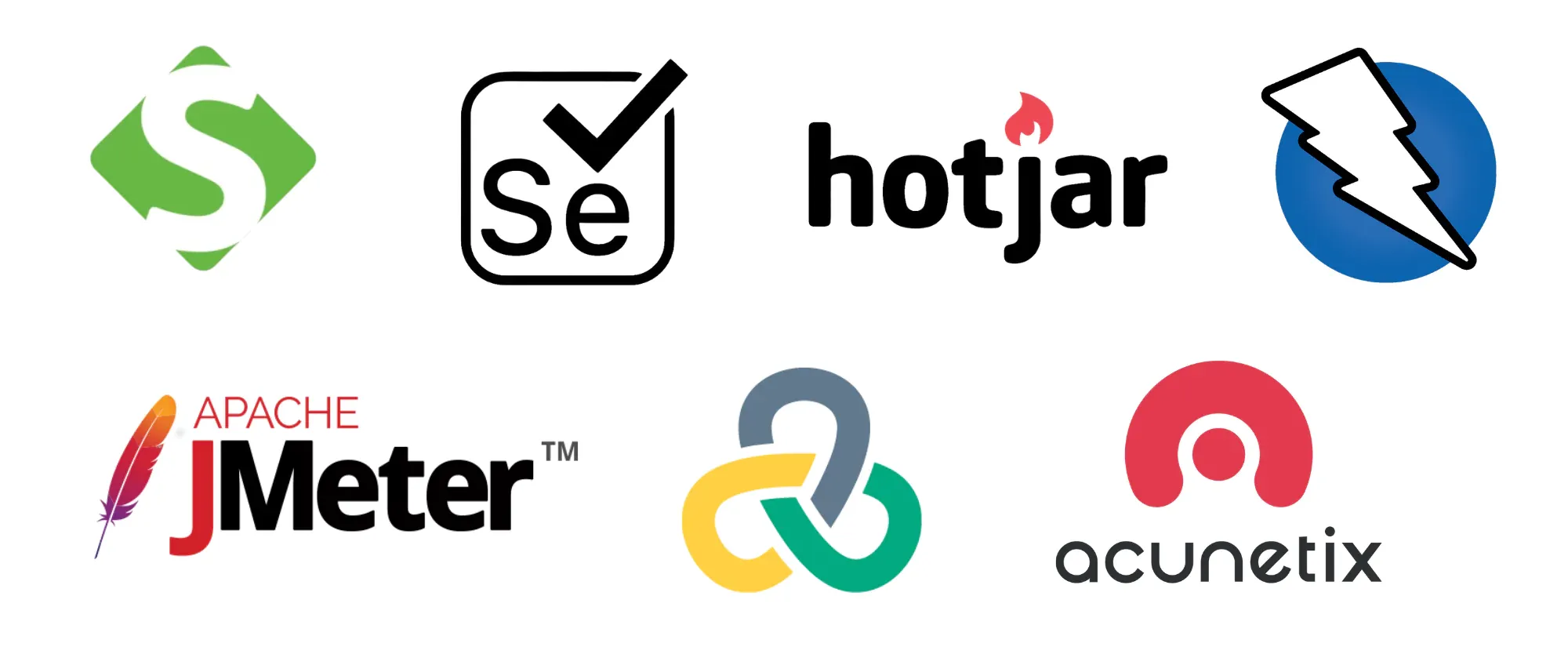Software goes beyond just working properly. It should be fast, secure, and easy to use. Non-functional testing (NFT) helps ensure these qualities by checking how well the software behaves behind the scenes. It's like making sure a car isn't just good at going forward, but also handles corners well, gets good gas mileage, and keeps the driver comfortable.
In simpler terms, NFT focuses on the user experience and overall health of the software, rather than just the specific features. By performing NFT, you can identify issues that might frustrate users or cause problems down the line.
>> Read more about software testing:
- Detailed Explanation of 7 Software Testing Principles
- How to Write A Powerful Test Plan in Software Testing?
- 4 Levels Of Testing In Software Testing: Explanation & Examples
- An Ultimate Guide to Different Test Case Design Techniques
- A Complete Guide to Adhoc Testing with Practical Examples
What is Non-Functional Testing (NFT)?
Non-Functional Testing (NFT) is the evaluation of software characteristics that are external to its core functionality. These characteristics are often intangible and can't be directly measured through traditional functional testing methods.
Suppose that you are ordering a pizza online. Functional testing would be like checking if the website lets you choose toppings, place the order, and pay for it. Meanwhile, non-functional testing (NFT) goes a step further. It ensures the website is fast enough so you don't get hangry waiting, secure so your payment information is safe, and user-friendly so placing the order is a breeze.
In other words, NFT focuses on how well the software performs, not just if it does what it's supposed to do.

Key Characteristics of Non-Functional Testing
Focus on Non-Functional Attributes
NFT evaluates aspects like performance, security, usability, and scalability, which aren't directly tied to specific features. These attributes determine how well the software behaves in real-world use cases.
Measurability
A core principle of NFT is utilizing quantifiable metrics, even though some characteristics involve subjective evaluation (e.g., user-friendliness). Examples include response times, resource usage (CPU, memory), and error rates. Measurable data enables objective assessment of the software's behavior under various conditions.
Indirect Impact on Functionality
Unlike functional testing, where a failed test indicates a bug in a specific feature, NFT results don't directly determine if a core function works correctly. However, NFT failures can reveal underlying issues that indirectly impact functionality.
For instance, poor performance test results might expose limitations that hinder core features from working effectively under heavy load.
Uncertain Requirements at Onset
Exact performance benchmarks, user experience expectations, or security thresholds may not be fully defined at the beginning. This is because these attributes can be influenced by factors like user base size, target platforms, and evolving industry standards. However, establishing baseline metrics and iteratively refining them based on testing results is crucial for NFT success.
Types of Non-Functional Testing
Non-functional testing (NFT) goes beyond the "what" a software program does and delves into the "how" it performs. Here are some key types of NFT:
Performance Testing
Performance testing checks how fast and stable the software runs under various conditions. This includes load times, responsiveness, and stability.
Example: An e-commerce website undergoes performance testing to ensure fast product page loading times and a smooth checkout process, especially during peak shopping seasons.
Security Testing
This involves identifying vulnerabilities that hackers might exploit to steal data or disrupt operations.
Example: A banking application undergoes security testing to identify and fix weaknesses that could allow hackers to access user accounts or financial information.
Usability Testing
Usability testing focuses on how easy and intuitive the software is for users to navigate and interact with. This includes learnability, ease of use, and UI design.
Example: A new mobile game undergoes usability testing with a group of target players. This helps identify any confusing gameplay mechanics or unclear menus that might hinder user enjoyment.
Compatibility Testing
Compatibility testing verifies if the software can run on various devices or operating systems.
Example: A mobile app undergoes compatibility testing to ensure it functions seamlessly on both Android and iOS devices, with proper adjustments for different screen sizes and touch controls.
Scalability Testing
Scalability testing determines how the software handles increased load or data volume.
Example: A social media platform undergoes scalability testing to ensure it remains stable and responsive even as its user base grows and the amount of data it processes increases.
Reliability Testing
Reliability testing ensures the software performs consistently over time without unexpected crashes or errors.
Example: A hospital management system undergoes reliability testing to guarantee continuous and reliable operation, ensuring patient data and medical records are always accessible.
Efficiency Testing
This checks how well the software uses resources like memory and processing power. This helps maintain smooth operation and avoids slowdowns.
Example: A video editing software undergoes efficiency testing to optimize its resource usage. This ensures smooth video editing without draining the computer's battery or causing overheating.
Volume Testing
Volume testing checks how the software handles large amounts of data. This is crucial for applications that deal with extensive data sets.
Example: A data analytics platform undergoes volume testing to ensure efficient data processing and analysis capabilities, even when dealing with massive datasets.
Recovery Testing
Recovery testing verifies if the software can recover from crashes or failures and resume operation quickly.
Example: A point-of-sale system undergoes recovery testing to ensure it can quickly recover from a power outage or system crash, minimizing downtime and lost transactions.
Responsive Testing
Responsive testing ensures the software adapts to different screen sizes and devices. Imagine a website layout that adjusts comfortably for desktop, tablet, and mobile users.
Example: A travel booking website undergoes responsive testing to ensure a user-friendly experience across all devices, allowing seamless browsing and booking of travel arrangements on desktops, tablets, and smartphones.
Load Testing
Load testing focuses on how the software handles increased pressure. It simulates many users accessing the software simultaneously to see if it can handle the strain. This helps identify bottlenecks and ensure the software performs well under heavy load conditions.
Example: A social media platform undergoes load testing to ensure it remains stable and responsive even during major events or news cycles that attract a surge of users.
Visual Testing
Visual testing checks if the software's visual elements (like buttons, menus, fonts, colors) are displayed correctly and consistently across different devices and platforms. Visually appealing and user-friendly interface is ensured.
Example: A social media app undergoes visual testing to ensure buttons, icons, and fonts are displayed consistently and clearly across all devices, maintaining a uniform user experience.
Accountability Testing
This verifies that the software functions as intended and adheres to established requirements or regulations. It is crucial in industries with strict compliance needs, like finance or healthcare.
Example: A medical device undergoes accountability testing to ensure its data output (e.g., patient vital signs) meets industry accuracy standards.
Portability Testing
Portability testing assesses how well the software can be moved from one environment to another, maintaining functionality and performance across different environments. This is important for situations like:
- Migrating software from on-premise servers to the cloud.
- Porting a mobile app from one operating system (e.g., Android) to another (e.g., iOS).
- Upgrading the software to run on newer hardware or operating systems.
Example: A web application undergoes portability testing before migrating from a company's internal server to a cloud platform. This ensures the application functions as intended and maintains user experience in the new environment.

Non-Functional Testing Parameters
- Security: Protection against unauthorized access, modification, or disruption of the system.
- Reliability: Consistency in performing tasks without errors over a defined period. Reliability testing ensures the software functions as expected and minimizes unexpected crashes or failures.
- Availability: The accessibility and uptime of the system.
- Usability: The ease of use, learnability, and user-friendliness of the software.
- Scalability: The ability of the software to handle increased load or data volume.
- Performance: This broader term encompasses aspects like speed, responsiveness, and stability under various loads.
- Interoperability: The ability of the software to exchange data and functionality with other systems.
- Efficiency: The ability of the software to handle workload with minimal resource usage and response time.
- Flexibility: The ability of the software to adapt to changes in the environment, such as hardware upgrades or different operating systems.
- Reusability: The ability to use existing code modules or components in new software applications, ensuring code maintainability and adaptability for future projects.
Popular Non-Functional Testing Tools
For Performance Testing
- Apache JMeter: An open-source heavyweight, JMeter is a popular choice for load testing web applications and APIs. Simulate high user traffic and analyze performance metrics to identify bottlenecks and ensure smooth operation under pressure.
- LoadRunner: A commercial tool, LoadRunner offers comprehensive load testing capabilities. Create realistic user scenarios, analyze performance under various loads, and pinpoint areas for optimization.
>> Read more: Top 7 Best Performance Testing Tools for Developers
For Security Testing
- OWASP ZAP: An open-source tool, ZAP provides a comprehensive suite for web application security testing. Identify vulnerabilities like SQL injection and cross-site scripting (XSS) to safeguard your software from malicious attacks.
- Acunetix: A commercial security scanner, Acunetix offers in-depth vulnerability assessments for web applications, APIs, and mobile apps. Uncover security weaknesses and prioritize remediation efforts to fortify your software's defenses.
For Usability Testing
- UserTesting.com: A cloud-based platform, UserTesting.com allows you to recruit real users to test your software remotely. Observe user interactions, gather feedback, and identify any usability issues that might hinder user experience.
- Hotjar: A user behavior analytics tool, Hotjar provides heatmaps, recordings, and session replays to understand how users interact with your software. Identify areas of confusion, optimize user flows, and ensure intuitive user experiences.
For Cross-Functional Testing
- Selenium: An open-source automation powerhouse, Selenium can be used for various NFT tasks. Automate browser interactions for performance testing, usability testing, and regression testing, ensuring consistency and efficiency across your NFT efforts.
- SoapUI: An open-source web service testing tool, SoapUI facilitates functional and non-functional testing of SOAP and REST APIs. Validate API behavior, assess performance under load, and ensure seamless integration with other systems.
The NFT tool landscape is vast and ever-evolving. Remember, the best tools for you depend on your specific needs and the type of software you're testing. Research, explore, and find the tools that empower you to deliver exceptional software, both in features and functionality.

>> Read more: Differences Between Functional and Non-Functional Testing
Best Practices for Non-Functional Testing
Here are key best practices to make your NFT efforts shine:
- Consider NFT integration into initial stages of the software development lifecycle (SDLC). Collaborate with stakeholders, architects, and developers to understand non-functional requirements and design the software with them in mind. This ensures a holistic approach to quality from the get-go.
- Set specific, measurable objectives for your NFT efforts. What level of security is desired? How quickly should the software respond? Clearly defined goals for performance, usability, security, and other non-functional aspects guide testing efforts and provide a benchmark for evaluation.
- Analyze potential risks and prioritize NFT efforts based on their impact on business operations. Focus on critical functionalities, high-risk areas, and scenarios that could lead to performance degradation, security vulnerabilities, or usability problems. This ensures you're testing the areas that matter most.
- Utilize NFT automation tools and frameworks to streamline your testing processes. This frees up valuable time for more strategic testing efforts and ensures consistency in your NFT approach.
- Implement robust monitoring mechanisms during testing to capture performance metrics like response times, resource utilization, throughput, and error rates. These insights help identify bottlenecks, analyze performance, and ensure the software functions as intended under various loads.
- Regularly review your NFT strategy, adapt to new technologies and testing tools, and learn from past experiences to ensure your NFT efforts remain effective over time.
>> You may consider:
- What is Unit Testing? Definition, Benefits & Process
- AI in Software Testing: How It Works, Benefits & Challenges
- Comprehensive Breakdown for Software Testing Outsourcing
Final Thoughts
Non-Functional Testing (NFT) dives deeper than features, ensuring a smooth user experience. It's like examining a building's foundation - crucial for software quality. By incorporating NFT early, you can identify hidden issues like performance bottlenecks and security vulnerabilities. This builds trust and prepares your software for future growth. In short, NFT empowers you to deliver exceptional software, both in features and functionality.
>>> Follow and Contact Relia Software for more information!
- testing
- development
- Mobile App Development
- Web application Development

